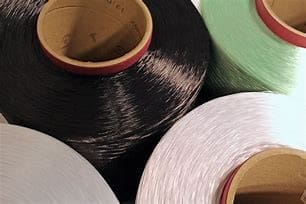The fashion industry is a ever-growing industry. The fashion industry has two main components namely- Man Made fiber and the natural fiber without which the industry is incomplete.The demand of natural fiber and man – made fiber is increasing with the growth of fashion industry. There are various collaborations and partnerships required in order to keep the fashion industry to sustain and run smoothly. For the fashion to function and sustain in the market, there has to be a coordination between the raw materials, suppliers, retailers, disposal and the sustainability.
The relationship between with the environment and the global textile needs to be discrete. With the fashion industry having an establishment over 75 countries with 250 million people following the fashion industry, the need of cotton industry needs to function at a higher rate. For this, the discrete for fiber production, textile manufacturing,garment manufacturing and retailing is required in order to keep it sustaining. A point to be noted is that, all of these industries are facing sustainability issues at every possible stage. Cotton is the best example of this. Cotton is grown and sustained over more than 70 countries all over the world. The cotton production is usually checked on repeated basis by the retailers and the NGOs. The cotton is indirectly checked by the people regarding the lack of water, lack of stitching, kind of fitting,etc.
As the fashion industry is a ever growing industry, the overall demand for the cotton industry will be witnessing a continous pick up/growth. The natural fibers might still have to face challenges as there is a disruption/competition to the manmade fibers. Being a competitive fiber, Polyester too is a better option or can be an alternative to the natural fibers. The increase in the sustainability will help in the major growth of the MMF. A major portion of Polyester is imported from China followed by India and the Southeast Asia. China alone constitutes 69% of the MMF imports. Whereas on the other hand, India and the Southeast put together will be 86% of the entire globe. Due to this, the share of polyester has increased by 9% since 2007.
What is India’s role in MMF or Natural fiber?
Despite of the huge cultural diversity, India is still lacking behind in the matters of production of both natural and man- made fibers. India still relies on the other nations for the heritage fiber and the growth of cotton. The exports of raw materials are lesser in comparison to China, Bangladesh, Vietnam and Turkey put together. The Natural fiber and the MMF industry can be considered as a growing industry in a country like India.
The designs and patterns made in India are known for their excellency, pattern, durability and intricacy. Currently, there are high investments going on in the global market. Though the natural fiber might take time to take the center stage, the MMF might take the centre stage at a faster pace. This can be calculated on the basis of the number of overseas buyers/ direct buyers from the businesses. The textile industry has a 2% contribution to the Gross Domestic Product (GDP). Companies like Aditya Birla Group, Bhilosa industries and Reliance industries top the production list in matters of polyester yarn.
The textile industry covers all the segments of the MMF and the natural fiber which is based on textile value chain. This is taken from the fiber/ filament manufacturing in order to make the final product. Ludhiana and Surat are the largest producers of MMF whereas Rajasthan,TamilNadu, Karnataka, Andhra Pradesh and Kerala and Maharashtra are known for their natural fibers. The turnover from Surat alone is 3.5 crore which contributes 40% to the MMF. Similarly, in the southern part of India, “pattu”saree is a well known silk saree/ man- made fiber which is woven carefully. The turnover of the “pattu” saree is around Rs.200 crore. The Kanchivaram saree is produced not only in Kanchipuram but also in Andhra Pradesh and Karnataka to a great extend.
| Country | Total Exports | Cotton Textile | Cotton Apparel | MMF Textile | MMF Apparel | Natural fibers |
| China | 279 bn UDS | 11% | 24% | 19% | 35% | 11% |
| India | 37 bn USD | 26% | 23% | 16% | 17% | 18% |
| Bangladesh | 35 bn USD | 2% | 69% | 1% | 22% | 6% |
| Vietnam | 33 bn USD | 9% | 28% | 7% | 49% | 8% |
| Turkey | 27 bn USD | 12% | 34% | 22% | 21% | 11% |
Natural fiber is an emerging eco-friendly product which is applied to the textile industry and to the individuals. This paves a way for the clean and green environment. There are many types of natural fibers which includes- seed fibers, leaf fibers, etc. As the name suggests, the natural fibers are extracted from fruits such as pineapple, waste leaf,etc. Due to this, the clothes made of natural fibers are priced higher in the market. It occupies 2.5 to 3.5% of the market. A land of 600 thousand acres is required for the production. The natural fiber works on the principle of Economy. Society, Culture and Environment.
Sisal, Screw Pine, Palm leaf, Korai grass, Pineaaple leaf fiber, Sitalpati, Bamboo, Sikki and Mung grass, Bananan, Hemp, Sisal and Himalayan nettle are produced from various states of India. The textile fibers will still continue to be a matter of debate and issue in the sustainable industry and also the clothing sense of people. According to a study conducted, the people choosing more sustainable products have a chance of reducing the hazardous environmental impacts caused due to the clothing industry. According to the Higg Material Sustainability Index (MSI), the substitution in the material will reduce the climate change to a large extend and focus on the growth of the textile sector.

